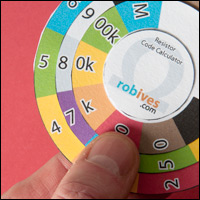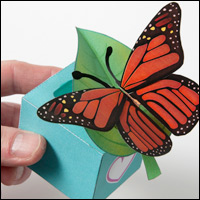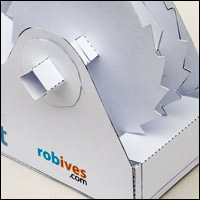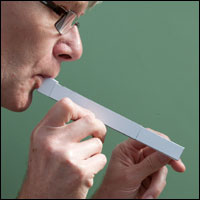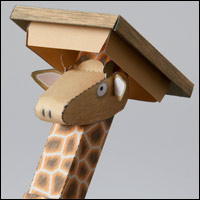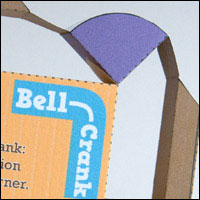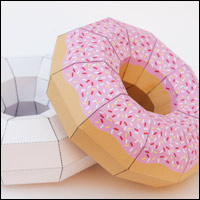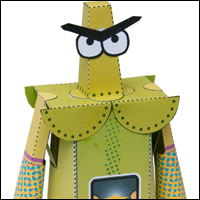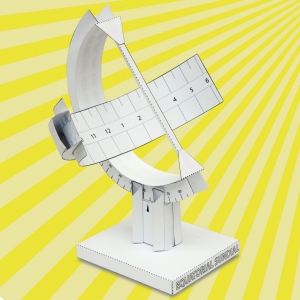“OddBot” has been added to your cart. View cart
£0.00
Resistor Colour Wheel
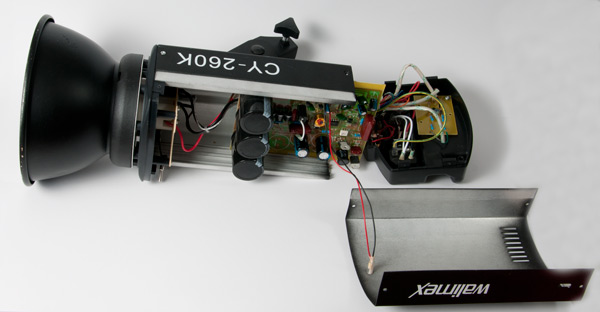
I set up the studio flash to take pictures of the butterfly from the previous post. One of them made an interesting pzzzt sound and gave off a thin plume of smoke before I could pull the plug.
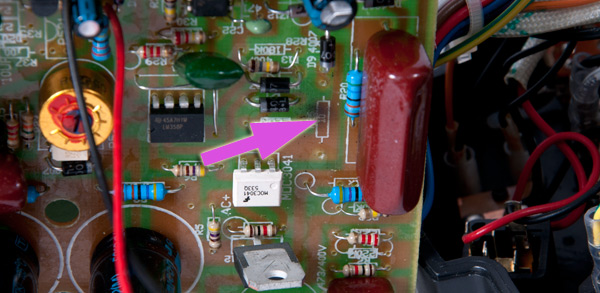
I took it apart to see what was going on and found the offending resistor in the space arrowed.
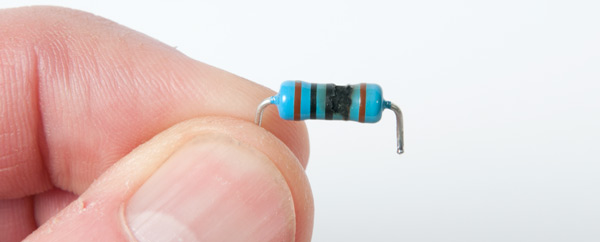
Urgh! Definitely the source of the pzzzt!
Resistors use coloured bands to show their value. There are usually four bands, the first two code for the first two digits of the resistors value, the third is the multiplier, basically the number of zeroes on the end of the number. The final band shows the tolerance of the resistor, how accurate it is.
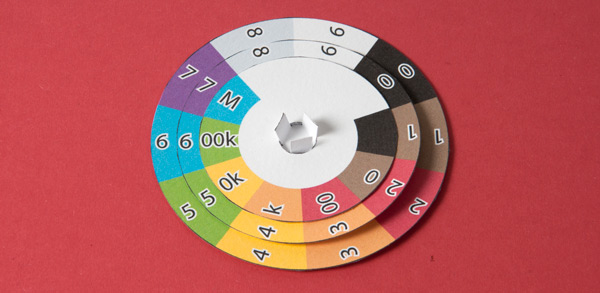
I thought I’d make a code wheel to help find the value of resistors by dialing in their colour bands.
Download the file from the link and print out the parts onto thin card (230 gram / 230 micron) Cut out the holes the cut out the parts. Lift up the three tabs in the largest disk. Thread the other two disks into place as shown above.
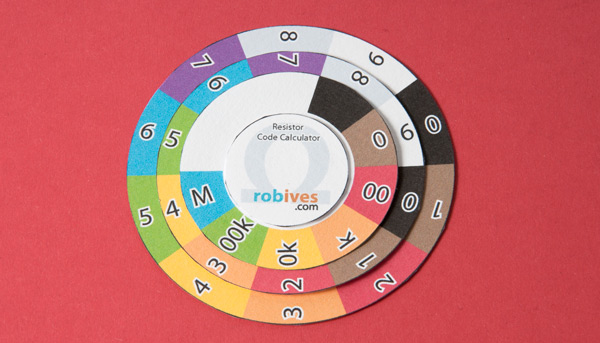
Fold the tabs flat. Dab a small amount of glue on each tab and glue the cover into place. Make sure the disks are free to turn.
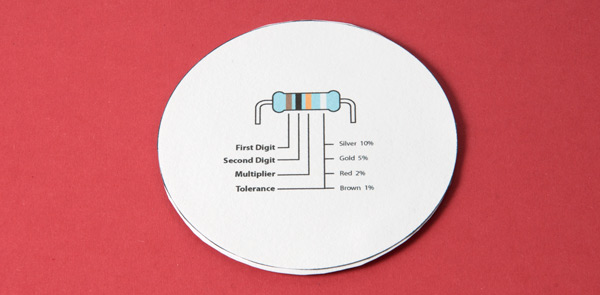
Flip the disk over and glue the guide on the back.
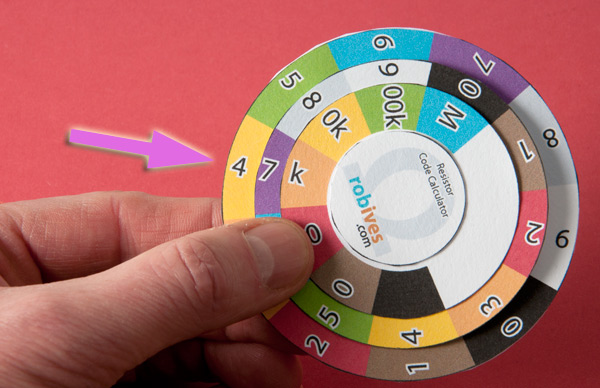
To use the Resistor Code Calculator, dial in the colours and read off the number – simple!
So for example a yellow, purple, orange resistor, would have a value of 47k ohms.
Paper engineering meets electronic engineering.
Other projects you might be interested in:

